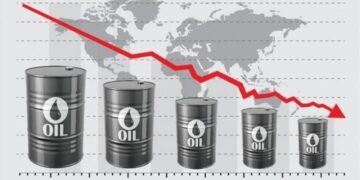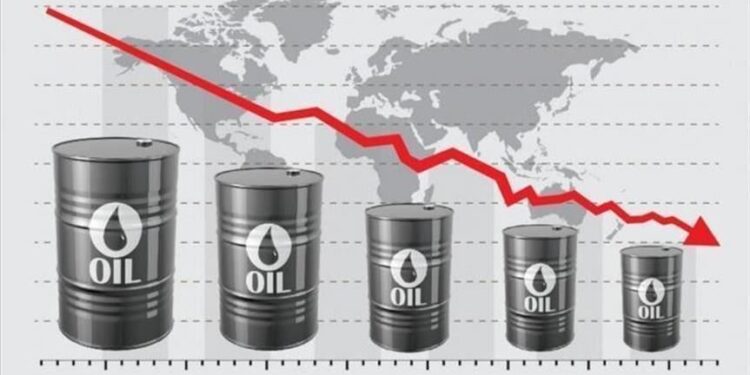By John Ikani
Oil prices took a dive by more than $1 per barrel on Monday as peace talks between Israel and Hamas in Cairo eased concerns of a broader conflict in the Middle East, while U.S. inflation figures cast doubt on the likelihood of immediate interest rate cuts.
Brent crude futures for June, set to expire on Tuesday, experienced a decline of $1.25, or 1.4%, reaching $88.25 per barrel by 11:13 a.m. EDT (1513 GMT). Meanwhile, the more active July contract saw a drop of $1.01, or 1.14%, landing at $87.20 per barrel.
U.S. West Texas Intermediate (WTI) futures followed suit, sliding $1.19, or 1.4%, to $82.66 per barrel.
Israeli airstrikes on Monday resulted in the death of at least 25 Palestinians and the injury of many others, coinciding with the arrival of Hamas leaders in Cairo for discussions with Egyptian and Qatari mediators.
Egypt remains optimistic but awaits feedback on the proposed plan from both Israel and Hamas, stated Egyptian Foreign Minister Sameh Shoukry.
“Amidst a lack of significant developments, the potential easing of tensions in Gaza has put downward pressure on oil prices,” remarked John Evans of oil brokerage firm PVM.
Market attention was also directed towards the U.S. Federal Reserve’s monetary policy review scheduled for May 1, which could provide insights into the central bank’s stance on interest rates.
“The market will closely scrutinize the Fed’s language and forward guidance,” emphasized PVM’s Evans.
Investors are cautiously factoring in a higher likelihood of the Fed raising interest rates by 0.25% this year and next, given the resilience of inflation and the labour market.
U.S. monthly inflation experienced moderate growth in March, dampening expectations of imminent rate cuts. Lower inflation typically increases the likelihood of rate cuts, which can stimulate economic growth and demand for oil.
READ ALSO: Nigeria: Tribunal Stops South African PayTv Provider From Hiking Subscription Rates
“The persistent U.S. inflation raises concerns about ‘prolonged’ high-interest rates,” noted independent market analyst Tina Teng, pointing to the resulting strength of the U.S. dollar and its impact on commodity prices.
A stronger dollar makes oil more expensive for holders of other currencies. Furthermore, the oil market awaited the release of the monthly U.S. nonfarm payrolls report, scheduled for Friday and closely monitored by the Fed.
“This report is likely to significantly influence next week’s oil trading,” stated Jim Ritterbusch of Ritterbusch and Associates.
In contrast, early insights into April inflation data from the eurozone, particularly from Spain and Germany, present a mixed outlook for the European Central Bank, though they are unlikely to derail plans for a rate cut in June.
Inflation data for the broader eurozone is slated for release on Tuesday.




































